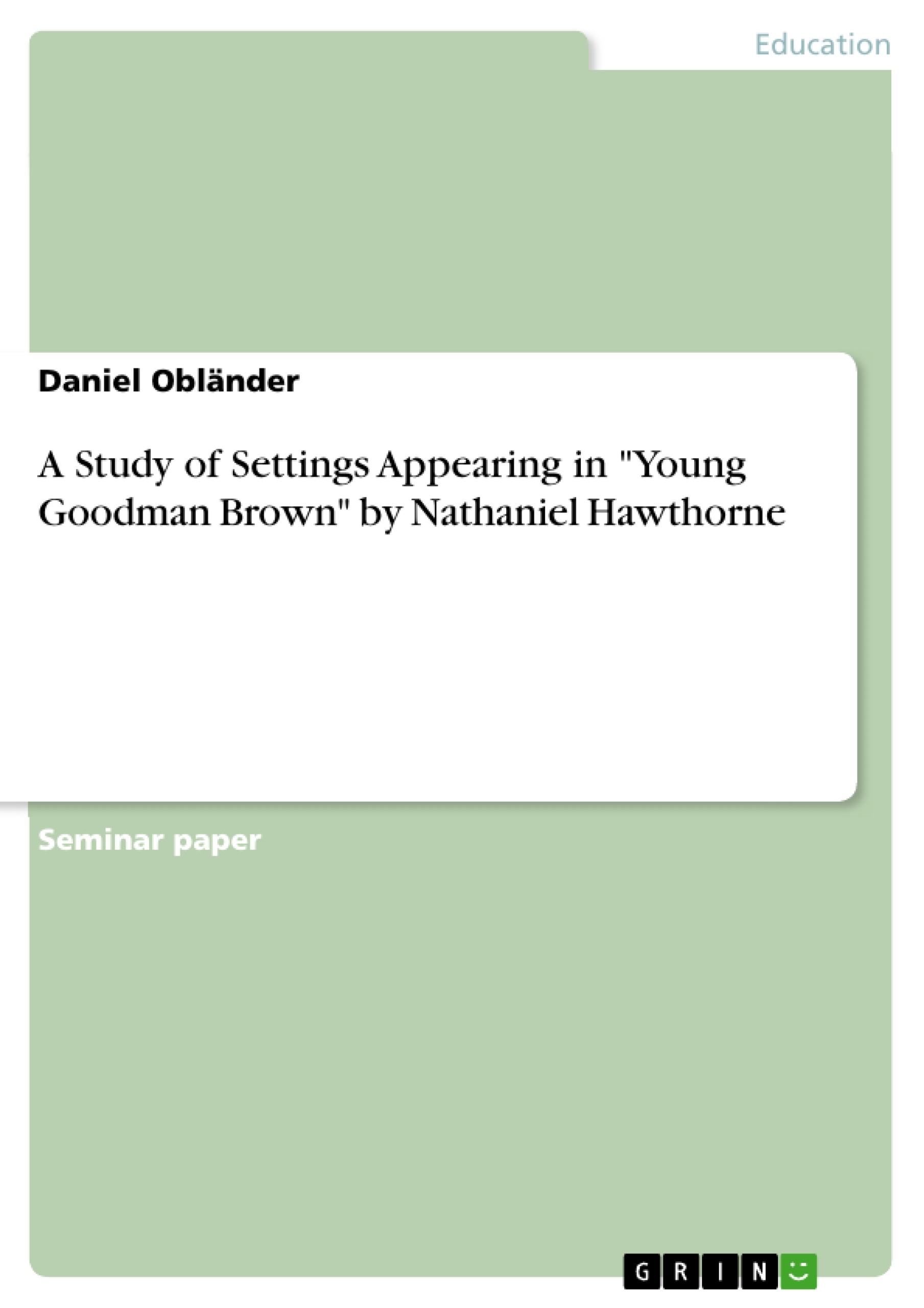The setting of a story is just as important as the characters that act within the story. No narration can stand without a setting; the setting is essential and influences every narration. Good settings can give a story its final touch and bad chosen settings can destroy a narration. In historical narrations, the setting is already given and an unchangeable part of the story line. In a fictional story, on the other hand, the setting is part of the fiction and was entirely chosen by the narrator himself. He tries to use the setting in favor of his purposes in order to make the story work. Very often, a setting is selected in order to make a story more authentic or to produce a certain feeling and mood within the reader. However, in my term paper, I will focus on the settings that appear in “Young Goodman Brown”. This is a subject that has not attracted as much attention as other parts of “Young Goodman Brown” but is without any doubt a very interesting field of study. In my study I will try to identify the different settings of the story in diverse ways. Thus, it is important not only to describe the settings but also to discuss their meaning; not only for the story itself but also for the people of the time when “Young Goodman Brown” was first published. It is especially interesting to see what kind of reactions Hawthorne tried to generate with “Young Goodman Brown” among the Puritan population in New England of which he himself was a part. The setting of the forest plays a special role in this case and shows us that people of Hawthorne’s time had a different connection to their environment and to nature than we do today. The early Puritans who came to New England had a very difficult relationship to their new, wild, and uncultivated environment. Further, it is important to talk about Salem Village, Massachusetts and the witch trials that occurred there. The village and its Puritan population, as well as the witch trials, for which Salem became famous, are important to “Young Goodman Brown.” Additionally, the relationship of the Hathorne family to the city of Salem and to the witch trials is an interesting one. This relationship explains a lot about Nathaniel Hawthorne’s motivation to write the short story “Young Goodman Brown.” The story of Goodman Brown primarily deals with the guilt and the evil that lies within every human being no matter how religious, honest, gentle or truthful he seems to be.
Inhaltsverzeichnis (Table of Contents)
- Introduction
- Salem Village and the Salem witch trials
- The three borders
Zielsetzung und Themenschwerpunkte (Objectives and Key Themes)
This term paper examines the various settings appearing in Nathaniel Hawthorne's short story "Young Goodman Brown" and analyzes their significance within the context of the narrative and the Puritan society of the time. The paper aims to explore the symbolic weight of these settings and their impact on the characters' journeys and the overall message of the story.
- The importance of setting in shaping the atmosphere and meaning of a narrative
- The symbolic representation of borders and thresholds in Goodman Brown's journey
- The role of the forest as a place of transformation and confrontation with darkness
- The historical and cultural context of Salem Village and the Salem witch trials in Hawthorne's story
- The exploration of Puritanism and its influence on the characters' beliefs and actions
Zusammenfassung der Kapitel (Chapter Summaries)
The introductory chapter establishes the importance of setting in literature, highlighting its role in creating atmosphere and influencing the narrative. It introduces the ambiguity of "Young Goodman Brown" and the ongoing debate surrounding its allegorical meaning. The paper focuses on the settings of the story, particularly the forest, Salem Village, and the threshold of Goodman Brown's home.
Chapter 2 delves into the historical context of Salem Village and the infamous witch trials. It explores the Hathorne family's involvement in these events, highlighting Nathaniel Hawthorne's ancestors' role as magistrates and their persecution of Quakers and witches. This chapter connects the historical background to Hawthorne's own motivations for writing "Young Goodman Brown" and his critique of Puritan fanaticism.
Chapter 3 examines the symbolic significance of the three borders in the story, starting with the threshold of Goodman Brown's house. It analyzes the symbolic weight of this first border and how it represents the initial step into a journey of transformation and a departure from familiar surroundings.
Schlüsselwörter (Keywords)
The primary keywords and focus topics of this study include setting, symbolism, Puritanism, Salem witch trials, Nathaniel Hawthorne, "Young Goodman Brown", allegory, transformation, borders, thresholds, forest, Salem Village, and the Hathorne family.
- Quote paper
- Daniel Obländer (Author), 2007, A Study of Settings Appearing in "Young Goodman Brown" by Nathaniel Hawthorne, Munich, GRIN Verlag, https://www.grin.com/document/154861
-

-

-

-
Upload your own papers! Earn money and win an iPhone X. -

-
Upload your own papers! Earn money and win an iPhone X. -

-
Upload your own papers! Earn money and win an iPhone X. -

-
Upload your own papers! Earn money and win an iPhone X. -

-
Upload your own papers! Earn money and win an iPhone X. -

-
Upload your own papers! Earn money and win an iPhone X.

